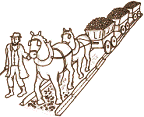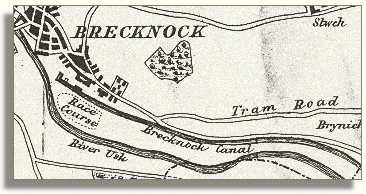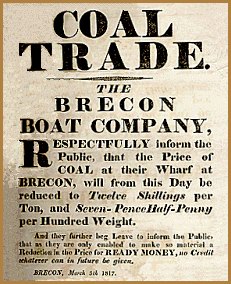|
For
more about the early horse-drawn tramroads
see our pages on the Hay Tramroad in the Talgarth
section of this website, or
click here. |
The canal was planned jointly with
the connecting tramroads which would
bring bulk loads from the nearest quarries and mines to the canal banks.
The tramroads were an early form of railway using horse-drawn
wagons or 'trams' running on simple
iron rails, so that the horses could pull much heavier loads than on the
rutted roads of the time.
Canals and tramroads were so important to each other that the first work
carried out by the new Brecknock & Abergavenny
Canal Company in 1794 was a tramroad. This one was to bring
coal from mines in the Clydach Valley to Gilwern and on to an ironworking
forge at Llangrwyney.


